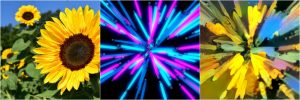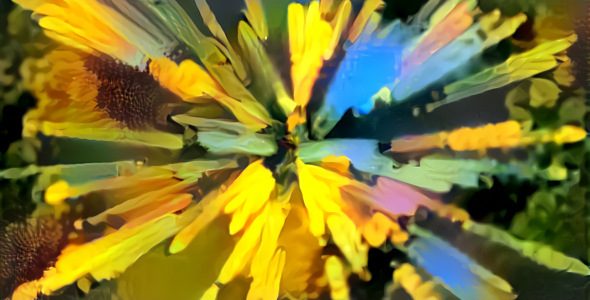Lately, I’ve been extremely interested in the things that humans can create by collaborating with artificial intelligence. My first exploration of human/AI interaction dove into the works from writers at Botnik studios. These writers used predictive text keyboards to write exceptionally satirical versions of existing novels, recipe books, sitcom scripts, and even “Dear Abby” columns. The results are, in my opinion, side-splittingly humorous and well worth your time.
Besides humor, humans can work with AI to create some extremely interesting art from a computer’s perspective.
Engineers tasked deep neural networks (DNNs) with learning to identify objects in the environment, such as stop lights and pedestrians near a self-driving automobile, for one example. After working with the process in one direction (giving the DNN an image and telling it to identify the object), the engineers realized the process could be carried out in reverse; they gave the network an object and told it to create images of the object. In one example, the network was given the object “dumbbell,” which produced these images of dismembered arms holding weights. The network associated dumbbells and the arms that hold them as a single object. Where a human mind can make distinctions between the weight and the arm, the AI sees the dumbbell and arm as one object due to the sheer volume of images on the internet containing an arm and hand holding the dumbbell. This phenomenon of combining closely related objects and obscure patterns is what led to creating surreal art with AI.
DNNs work in layers of individual computers or nodes. When an image is fed to the system, each layer identifies patterns it sees in the image and sends the adapted version to the next layer. After combining all the results of each layer, the network can generate an image identification. The identifications that the networks create often result in highly abstract art that fall into the realm of psychedelic surreal art. Where a human might see a tree with clouds in the background, a DNN might see temples, animals, and other objects. Entire albums have been compiled showcasing the most interesting and representative pieces of the style. Google also hosted an art show with a few of the pieces on sale up to $8,000. People following the art show contributed to discourse surrounding its contribution to the art community, such as “can this be defined as art?” and “who gets the credit for this art? The AI programmer? The person who generated the digital images? or the AI itself?”

Sunflowers + Neon Lights = Funky Sunburst style
Google engineer Alexander Mordvintsev created DeepDream, a computer vision program that allows users to create their own surreal art for free through interacting with the AI algorithms. DeepDream features its own of community-generated images of human/AI interaction. In these interactions, humans can see through the eyes of a computer. The program recognizes patterns that we simply cannot identify on our own. Humans interacting with AI are currently unlocking potential beyond the limits of either one working alone. Here’s an image I created with the assistance of the program by uploading a picture of a sunflower and a picture of neon lights. In the new image, we can get a glimpse of what the program saw in the combined patterns of the two images.
In the future, we might have to face the challenge of how to treat AI that closely resembles human cognition. Until that day, however, we can continue using AI as a tool to write comedy, make art, and carry out other functions of civilization without fear of taking advantage of the process.




Leave a Reply